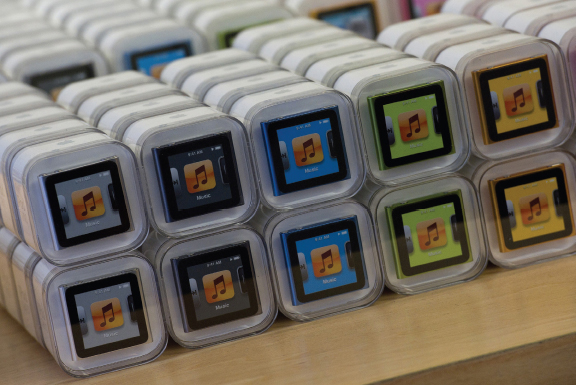From CDs to MP3s: Sound Recording in the Internet Age
Printed Page 132
In 1992, the MP3 file format was developed as part of a video compression standard. As it turns out, MP3 also enables sound, including music, to be compressed into small, manageable digital files. Combined with the Internet, MP3 revolutionized sound recording. By the mid-1990s, computer users were swapping MP3 music files online. These files could be uploaded and downloaded in a fraction of the time it took to exchange noncompressed music. And the files used up less memory.
VideoCentral  bedfordstmartins.com/
mediaessentials
bedfordstmartins.com/
mediaessentials

Recording Music Today
Composer Scott Dugdale discusses technological innovations in music recording.
Discussion: What surprised you the most about the way a song was produced, as was shown in the video?
In 1999, Napster’s now infamous free file-sharing service brought MP3 to popular attention. By then, music files were widely available on the Internet—some for sale, some available legally for free downloading, and many traded in violation of copyright laws. Losing countless music sales to free downloading, the music industry initiated lawsuits against file-sharing companies and individual downloaders.
In 2001, the U.S. Supreme Court ruled in favor of the music industry and against Napster—declaring free music file-swapping illegal because it violated music copyrights held by recording labels and artists. Yet even today, illegal swapping continues at a high level—in part because of how difficult it is to police the decentralized Internet. Music MP3s (some acquired legally, some not) are now played on computers, home stereo systems, car stereos, portable devices, and cell phones. In fact, MP3 is now the leading music format. (For more on music sales, see “Media Literacy Case Study: The Rise of Digital Music”.)

The music industry, realizing that the MP3 format is not going away, has embraced services like iTunes (launched by Apple in 2003 to accompany the iPod), which has become the model for legal online distribution of music. As of January 2010, iTunes had sold more than ten billion songs. Music fans have also begun to use streaming services like Spotify, Grooveshark, Last.fm, and Pandora, which cross a playlist-like aesthetic with elements of classic radio.
